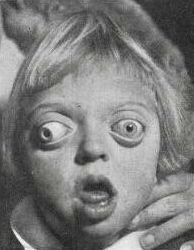| Facies | |
|---|---|
 | |
| Facial abnormalities associated with Crouzon syndrome | |
| Specialty | Medical genetics |
In medical contexts, a facies is a distinctive facial expression or appearance associated with a specific medical condition. [1] The term comes from Latin for "face". [2] As a fifth declension noun, [3] facies can be both singular and plural.